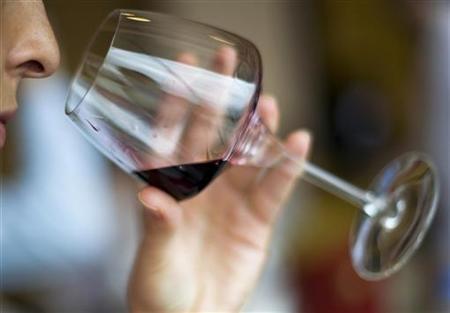Moderate to heavy drinking may raise women’s blood pressure
Just two drinks a day could raise a woman’s blood pressure enough to put her at risk for hypertension, Australian researchers say.
Past studies have shown that drinking alcohol raises men’s blood pressure, but results for women have been mixed. In the new trial, when women had 14 to 21 standard servings of red wine each week they had higher pressure than when they drank less or consumed non-alcoholic wine.
“If (women) are not drinking within national guidelines when drinking (no more than seven drinks in a week and three on any day) they should cut down, switch to non-alcoholic drinks after reaching this level,” said Dr. Barbara J. Turner, director of the Research to Advance Community Health (ReACH) Center at the University of Texas Health Science Center San Antonio, by email.
“It is worth paying attention to the long term effects of higher blood pressure levels because hypertension is the most common cause of heart disease,” said Turner, who was not involved in the new study.
Researchers at the University of Western Australia in Perth recruited 24 healthy women to test the effects of varying amounts of alcohol on 24-hour blood pressure.
The women were aged 24 to 49, and most were wine drinkers. Researchers measured the participants’ normal blood pressure before the study period. Then they divided women into two groups – higher-level and lower-level drinkers - based on how much each woman said she typically drank. There were no non-drinkers among the participants.
For the study, the women went through three month-long trials. In the first month, the women were instructed to drink a higher volume of Shiraz Cabernet wine each night, equal to 200 milliliters (about 6 ounces) or two glasses per evening for the lower-level consumers, and 300 ml (10 oz) or three glasses per night for the higher-level consumers, seven days a week.
In the second month the women drank a smaller amount of the same red wine each evening, with lower-level drinkers having one glass per evening on four days per week and higher-level drinkers having one glass each evening every night of the week.
For the last four-week period, the women had the same number of drinks as they had consumed during the higher volume month, but of de-alcoholized red wine. They did not consume alcohol at any other time of the day.
At the end of each month, a nurse monitored each woman’s blood pressure every 30 minutes for a 24-hour period. The women also completed diet and physical activity logs at the end of each study period, and provided blood samples as measures of whether they had complied in changing their alcohol intake.
Before the study began, the women had average blood pressure readings of 110 millimeters of mercury (mmHg) systolic and 69 mm Hg diastolic blood pressure.
After the higher-volume red wine period, their blood pressure was about 2 mmHg higher for systolic and 1.2 mmHg higher for diastolic readings than after the dealcoholized wine period. Blood pressure differences were most notable during the day rather than during sleep, as reported in Hypertension.
Blood pressure readings were similar during the lower-volume red wine month and the dealcoholized red wine month.
The researchers concluded that for healthy premenopausal women, drinking two to three glasses of red wine per day does increase blood pressure, and the effect is similar to that found previously among men.
This is not surprising, as research has shown that blood pressure goes up for men who drink more than guidelines recommend, according to Turner.
For each 1 mmHg increase in systolic blood pressure, the risk for cardiovascular mortality goes up by one percent, and the risk is greater for people who have high blood pressure to begin with, Turner said.
“The toxicity of alcohol appears at a lower level for women than men, therefore the (National Institute on Alcohol Abuse and Alcoholism) guidelines for sensible drinking are lower for women than men,” she told Reuters Health.
According to the Dietary Guidelines for Americans, moderate drinking includes up to one drink per day for women and two drinks a day for men.
“Although they used red wine, many studies have shown that it is alcohol of any form that is the risk,” Turner said.






